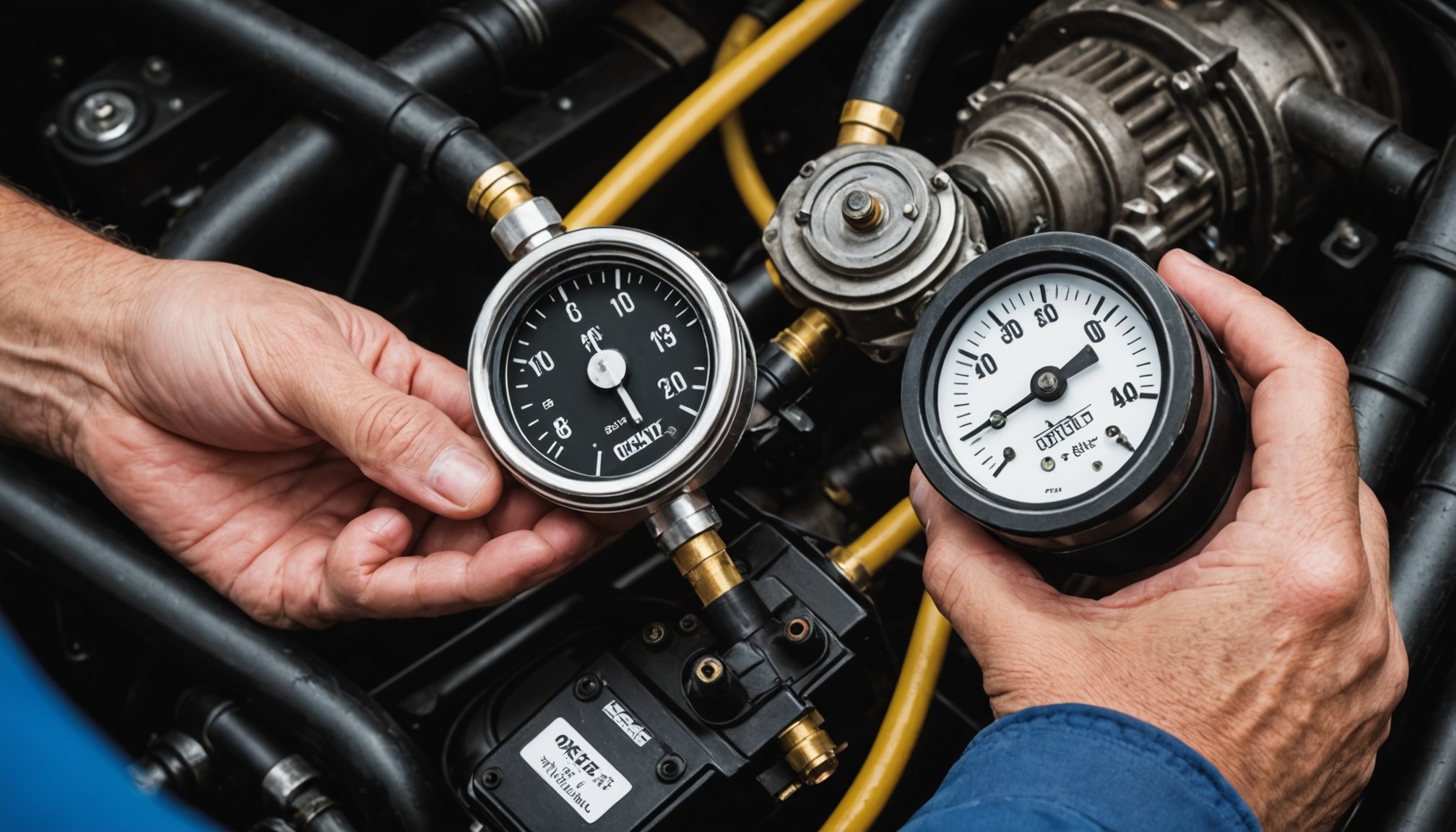Importance of Oxygen Sensors in Vehicle Performance
Oxygen sensors are crucial for maintaining the optimal air-fuel ratio in vehicles, playing a significant role in enhancing overall engine performance. By continuously monitoring the oxygen levels in the exhaust gases, these sensors ensure that the engine’s air-fuel mixture remains balanced. This balance is vital for achieving peak engine performance and longevity.
A well-functioning oxygen sensor significantly contributes to fuel efficiency. By ensuring the correct mix, it reduces excess fuel consumption, which not only saves money but also conserves resources. Moreover, accurate readings help in minimizing emissions, thereby making vehicles more environmentally friendly and adhering to stringent emissions regulations.
Additional reading : Essential Tips for Maintaining Your Vehicle’s Differential for Safe Off-Road Adventures
The impact of oxygen sensors extends beyond fuel efficiency and emissions control. They directly influence engine performance as they communicate with the engine’s control module to adjust the air-fuel mixture dynamically. This real-time adjustment is crucial for smooth engine operation, reducing wear and tear, thereby extending engine life.
In summary, oxygen sensors are indispensable in ensuring engines operate efficiently, economically, and with minimal environmental impact. Their role in regulating the air-fuel ratio is pivotal in optimizing vehicle performance, proving their value in modern automotive technology.
This might interest you : Essential Steps to Inspect and Prepare Your All-Wheel-Drive Vehicle for a Winter Wonderland Journey
Essential Maintenance Tips for Oxygen Sensors
Ensuring optimal performance of your oxygen sensors requires regular attention and care. These upkeep tips can significantly enhance the efficiency and lifespan of your vehicle’s sensors.
Regular Inspection and Cleaning
Routine inspections are crucial for maintaining your oxygen sensors. Start by visually inspecting sensors for signs of damage or wear. Cleaning the sensors helps remove debris that may interfere with their operation. Use a non-abrasive cleaner to safely cleanse the sensor’s surface. This simple act can often restore the sensor’s function and prevent emissions issues.
Replacement Guidelines
Knowing when to replace an oxygen sensor is essential for maintaining vehicle health. Generally, replacement is recommended every 60,000 to 90,000 miles, depending on the vehicle model. However, consult your vehicle’s manual or a professional technician for precise recommendations. If you notice a decline in fuel efficiency, it may be time to consider sensor replacement.
Common Signs of Wear
Recognizing wear can prevent further damage. Key symptoms include reduced engine performance, increased emissions, and check engine lights. An unusual smell or dark exhaust can also indicate sensor issues. Identifying these signs early can help avoid extensive repair needs, ensuring performance optimization for your vehicle.
Troubleshooting Oxygen Sensor Issues
Understanding oxygen sensor issues can be complex, yet learning to diagnose and resolve these problems effectively ensures a well-functioning vehicle.
Recognizing Malfunction Symptoms
Identifying the symptoms of an oxygen sensor failure is crucial for maintaining your car’s health. Symptoms may include a noticeable drop in fuel efficiency, rough engine idling, or increased emissions indicating a malfunction. A persistent check engine light can also be a sign of sensor failure, warranting further examination.
Diagnostic Tools and Techniques
For precise troubleshooting, using the right diagnostic tools is essential. An OBD-II scanner is indispensable for reading error codes that pinpoint oxygen sensor issues. Combine electronic data with a multimeter to measure sensor voltage, ensuring accurate diagnostics. Inspecting wire connections and physical sensors can additionally illuminate the root of the problem.
Common Misunderstandings
Many vehicle owners hold misconceptions about oxygen sensors. One common myth is that an oxygen sensor failure mandates immediate replacement for optimal vehicle performance. Often, cleaning connections or resolving wire damage might address underlying issues. Another misunderstanding is attributing all engine troubles to sensor problems, underscoring the need for thorough diagnostic tips rather than assumptions.
By effectively recognizing symptoms and employing diagnostic tips, addressing an oxygen sensor failure becomes a straightforward task, ensuring your vehicle remains efficient and reliable.
Impact of Oxygen Sensor Maintenance on Engine Performance
The engine performance impact is substantial when oxygen sensor maintenance is prioritized. Proper care of these components is essential for ensuring an optimal air-fuel mixture, directly influencing both fuel efficiency and overall performance.
Oxygen sensors are critical because they monitor the amount of oxygen in the exhaust gas, determining the precise air-fuel mixture required. This ensures combustion in the engine is efficient, reducing wastage and improving mileage. When these sensors are functioning correctly, they work alongside the engine’s electronic control unit (ECU) to adjust fuel delivery precisely, enhancing performance and preventing unnecessary fuel consumption.
Regularly maintaining oxygen sensors can lead to remarkable efficiency benefits. By ensuring the sensors are clean and functioning properly, you can avoid issues like engine misfires or sluggish acceleration, which are often attributed to improper air-fuel ratios. Additionally, a well-maintained air-fuel ratio prevents potential engine complications such as overheating or excessive emissions, which can lead to costly repairs.
In the long run, attention to oxygen sensor maintenance ensures your vehicle remains in peak condition, yielding consistent performance and a longer engine lifespan. This not only saves on fuel costs but also reduces the strain on the engine, providing enduring benefits.
Visual Resources and Learning Aids
In modern engine maintenance, learning is made easier with an array of visual aids. These resources are invaluable for both beginners and experienced vehicle enthusiasts seeking to maintain optimal performance.
Diagrams of Oxygen Sensor Locations
Understanding where oxygen sensors are located is crucial for effective engine maintenance. Detailed diagrams offer a clear, visual representation of sensor placements across different vehicle models. These charts facilitate straightforward identification without the need for complex disassembly, ensuring that you can address any malfunction warnings efficiently.
Step-by-Step Maintenance Videos
Video guides provide an engaging and practical way to grasp maintenance techniques. By watching engine maintenance videos, you can follow each procedure step-by-step, learning essential tasks like sensor replacement or system diagnosis. These videos often cover common issues, helping you gain confidence and technical knowledge needed to perform routine checks and repairs with precision and care.
Infographics on Air-Fuel Ratio Optimization
For those interested in understanding how to achieve optimal fuel efficiency, infographics break down the complex relationship between air and fuel ratios. These visual tools highlight performance benefits and key tips that can help improve engine performance. By utilizing infographics, vehicle owners can make informed decisions to enhance their vehicle’s fuel economy while also contributing to reduced emissions and better engine health.
FAQ Section on Oxygen Sensor Maintenance
To aid in maintaining your oxygen sensor and address any maintenance concerns, this FAQ sheds light on common questions.
What are some common misconceptions about oxygen sensor maintenance?
Misconceptions about sensor upkeep often lead to confusion. One widespread belief is that oxygen sensors require frequent replacement, when in fact they can last anywhere from 60,000 to 90,000 miles under normal conditions. Regular checks can ensure their functionality but unnecessary replacements can be avoided by monitoring performance indicators like engine efficiency and exhaust emissions.
How frequently should I check or replace my oxygen sensor?
While there’s no strict schedule for checking oxygen sensors, if your vehicle’s fuel efficiency drops or if the check engine light illuminates, it might be time for an inspection. Routine vehicle maintenance typically includes a check of the oxygen sensor status.
How can I boost my knowledge and confidence regarding sensor care?
To solidify understanding and confidence about oxygen sensors, consider consulting vehicle maintenance manuals or discussing any concerns with a trusted mechanic. By understanding key maintenance concerns and frequently asked questions, you can ensure your vehicle runs smoothly while avoiding unnecessary costs. Remember, an investment in understanding pays off in reduced repair needs and enhanced vehicle performance.











